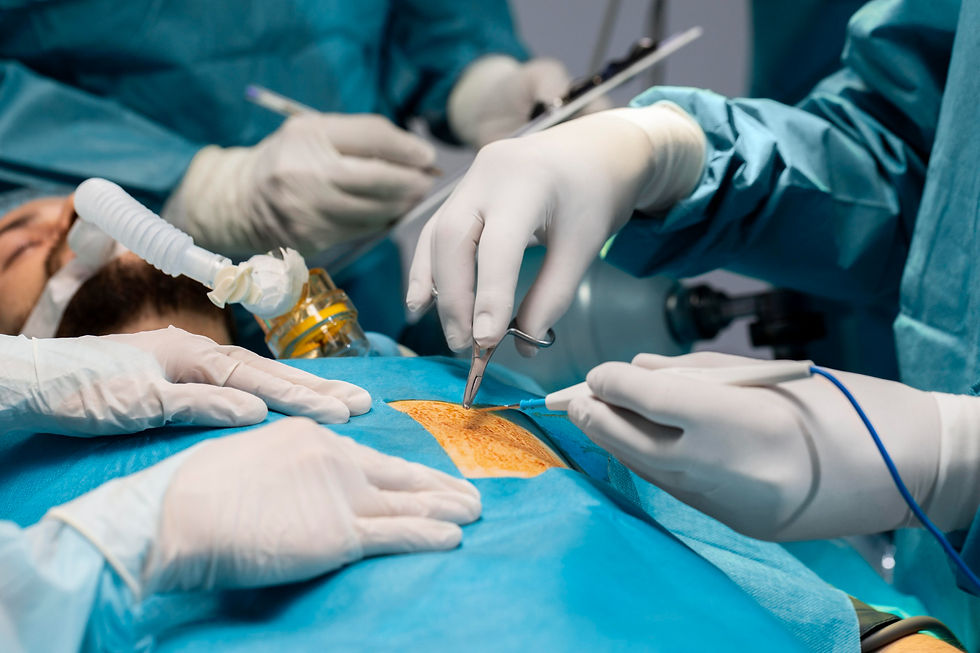SILS Liver Surgeries
The liver, a large organ weighing about 3 pounds, is situated on the right side of the belly. It has a reddish-brown colour and a rubbery texture that isn't typically felt.
Its primary function is to filter blood from the digestive tract before distributing it throughout the body. The liver also detoxifies chemicals and metabolizes drugs and secretes bile that ends up back in the intestines. The liver also makes proteins important for blood clotting and other functions.
What is the Liver?

Sign & Symptoms
-
Hepatitis
-
Cirrhosis
-
Liver Cancer
-
Liver Failure
-
Ascites
-
Gallstones
-
Hemochromatosis
-
Primary sclerosing cholangitis
-
Primary biliary cirrhosis
Skin and eyes that appear yellowish (jaundice)
Yellowing of skin and eyes, often due to liver or bile duct issues.

Abdominal pain and swelling
Discomfort and distension in the stomach area.

Swelling in the legs and ankles
Accumulation of fluid, indicating possible circulatory or organ problems.

Itchy Skin
Pruritus, a common sign of liver or bile issues.

Dark Urine Color
Unusually colored urine often related to liver or blood conditions.

Pale Stool Color, or Bloody or Tar-colored Stool
Abnormal stool appearance, possibly indicating digestive or liver problems.

Chronic Fatigue
Persistent tiredness that could be related to various medical issues.

Nausea or Vomiting
Frequent upset stomach and vomiting.

Loss of Appetite
Reduced desire for food, linked to various health conditions.

Tendency to bruise easily
Increased susceptibility to bruising, possibly due to blood or clotting problems.

Signs & Symptoms
Blood Tests

Liver Function Panel

ALT (Alanine Aminotransferase)

Bilirubin

AST (Aspartate Aminotransferase)

Alkaline phosphatase

Albumin

Ammonia

Diagnosis
Hepatitis A Tests

Hepatitis B Tests

Hepatitis C Tests

Prothrombin Time (PT)

Partial Thromboplastin Time (PTT)

Imaging Tests

Ultrasound

CT scan (computed tomography)

Liver biopsy

Liver and spleen scan

In rare cases, appendicitis may get better without surgery. Treatment might involve only antibiotics and a liquid diet. In most cases, however, surgery will be necessary.
The type of surgery will depend on the details of your case. If you have an abscess that hasn’t ruptured, you may receive antibiotics first. Your doctor will then drain your abscess using a tube placed through your skin. Surgery will remove your appendix after you’ve received treatment for the infection.
If you have a ruptured abscess or appendix, surgery may be necessary right away. Surgery to remove the appendix is known as an appendectomy. A doctor can perform this procedure as open surgery or through a laparoscopy.
Treatment Options
Treatment for appendicitis varies.


Hepatitis A Treatment
Hepatitis A usually goes away with time.

Hepatitis B Treatment
Chronic hepatitis B often requires treatment with antiviral medication.

Hepatitis C Treatment
Treatment for hepatitis C depends on several factors.

Liver Transplant
A liver transplant is needed when the liver no longer functions adequately, whatever the cause.

Liver Cancer Treatment
While liver cancer is usually difficult to cure, treatment consists of chemotherapy and radiation. In some cases, surgical resection or liver transplantation is performed. Single Incision Laparoscopic (SILS) Liver Surgeries are the latest, and perhaps most preferred method of surgery, where applicable.

Liver Resection
Every patient with a liver tumor should be evaluated for a resection. It is the only chance for cure. Removing the tumor will rid the body of the cancer and also prevent further spread to other regions.
The liver is a privileged organ in that it has the ability to regenerate if part of it is removed and this allows surgeons to operate upon it successfully. In patients with colon cancer that has spread to the liver, liver resection can cure 25 - 45% of the patients.
.jpg)
Single Incision Laparoscopic (SILS) Liver Surgeries include:
-
Radiofrequency ablation of liver tumors
-
Laparoscopic liver resection (removal)
-
Laparoscopic wedge resection of the liver
-
Laparoscopic left lateral segment removal
-
Laparoscopic right Hepatectomy

Paracentesis
When severe ascites -- swelling in the belly from liver failure -- causes discomfort, a needle can be inserted through the skin to drain fluid from the abdomen.

ERCP (Endocscopic retrograde cholangiopancreatography)
Using a long, flexible tube with a camera and tools on the end, doctors can diagnose and even treat some liver problems.

